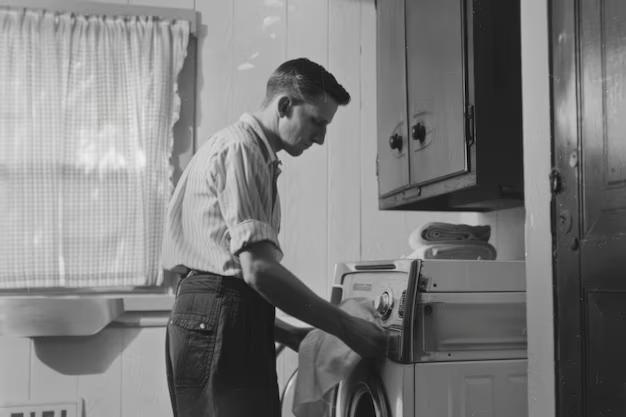How to Diagnose and Check Your Refrigerator Thermostat Like a Pro
Nothing is more frustrating than discovering lukewarm milk or frozen lettuce in your refrigerator. The culprit is often a faulty thermostat. Knowing how to check a refrigerator thermostat can save you from unnecessary repairs and costly replacements. In this article, we'll guide you through the process with helpful insights and tips.
Understanding the Role of a Refrigerator Thermostat
What Does a Refrigerator Thermostat Do?
The thermostat is the heart of your refrigerator's cooling mechanism. It regulates the internal temperature, ensuring that food stays fresh for as long as possible. By monitoring and adjusting the temperature settings, the thermostat activates the compressor and cooling system when needed.
Signs Your Thermostat Might Be Faulty
Before diving into solutions, it’s crucial to identify whether your thermostat is the issue. Common indicators include:
- Inconsistent Temperatures: Items freeze when they shouldn't, or the fridge is too warm.
- Unusual Noises: The fridge cycles on and off unusually.
- Constant Operation: The fridge runs continuously or not at all.
- Energy Bills: A spike in energy consumption might signal issues with the refrigerator's efficiency.
How to Access and Check Your Refrigerator Thermostat
Safety First: Unplug the Fridge
Before starting any examination:
- Unplug the Refrigerator: Disconnect from the power source to prevent electrical shocks.
- Empty the Contents: To allow clear access, remove items around the thermostat area.
Locating the Thermostat
The thermostat's location can vary by model but is usually found:
- Inside the fridge at the top or back.
- Within the temperature control panel.
Checking Thermostat Functionality
1. Visual Inspection:
- Check for Damage: Look for signs of visual damage, such as cracks or wear.
- Connections: Ensure wires and connections are secure.
2. Manual Adjustment:
- Thermostat Test: Set the thermostat to the coldest setting. Listen for a click or hum indicating the compressor has been triggered.
Using a Multimeter
For a more detailed check, use a multimeter to test the thermostat’s continuity:
- Remove the Thermostat: Consult the fridge's manual for removal instructions.
- Use the Multimeter:
- Set it to the ohms setting.
- Place the probes on the thermostat terminals.
- A reading of zero indicates a working thermostat, while infinity or no change could mean a fault.
Practical Tips for a Thorough Check
- 💡 Cool Down Time: After adjustments, allow several hours to pass and check if temperature changes.
- 🛠️ Manual Consultation: Use the refrigerator’s manual for model-specific guidance.
Troubleshooting Common Issues
Inefficient Cooling
Possible Culprits:
- High ambient temperature.
- Blocked air vents.
Solution:
- Ensure clean air circulation.
- Keep the ambient temperature optimal.
Constant Running
Possible Issues:
- Door seal problems.
- Incorrect thermostat setting.
Solution:
- Check door seals for any gaps.
- Adjust to a mid-range temperate setting.
Freezing Food
Potential reasons for freezing include:
- Incorrect Setting: Ensure the thermostat is at the recommended setting, typically between 35-38°F (1.7-3.3°C).
- Thermostat Malfunction: If adjusting doesn't help, the thermostat might need replacement.
DIY Fixes Versus Professional Help
While many basic checks can be done at home, problems like complex electrical faults or consistent failures might require professional intervention. If unsure, it’s wise to consult an experienced technician.
Preventative Measures for Long-term Efficiency
Regular Maintenance Routine
- Clean Coils: Dust and debris can reduce efficiency. Clean coils every six months.
- Defrost Regularly: For older models without auto-defrost.
- Seal Check: Regularly check door seals for integrity.
Energy Efficiency Tips
- Do Not Overload: Air needs space to circulate.
- Correct Placement: Avoid placing the fridge near heat sources like ovens.
Visual Summary: Quick Takeaways
Here's a handy table to summarize the process and tips for troubleshooting your refrigerator thermostat:
| Task ✅ | Steps 🔄 |
|---|---|
| Initial Checks | - Unplug and empty the fridge. |
| Locate Thermostat | - Typically found inside the fridge, at the top or back. |
| Inspect for Damage | - Check for visible physical damage and loose connections. |
| Adjust and Test | - Set thermostat to coldest setting to check compressor response. |
| Multimeter Use | - Test for continuity by removing thermostat and using a multimeter. |
| Common Troubleshooting | - Identify symptoms: freezing, not cooling, constant running. |
| Preventative Maintenance | - Clean coils, check seals, and follow proper loading practices. |
Final Thoughts
A properly functioning thermostat is crucial for your refrigerator's performance. By learning to diagnose potential issues and perform basic checks yourself, you will not only maintain your fridge’s efficiency but also extend its lifespan. Remember, regular maintenance and a little attention go a long way in ensuring that your refrigerator operates optimally. When in doubt, seeking professional help is always a reliable step. Stay cool and keep your foods fresher with these handy tips! 🥶🛠️
